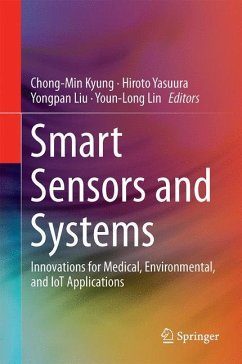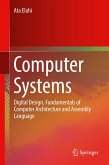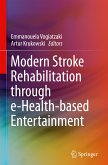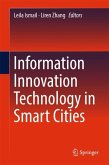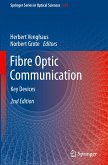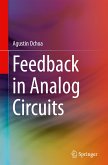Smart Sensors and Systems
Innovations for Medical, Environmental, and IoT Applications
Herausgegeben:Kyung, Chong-Min; Yasuura, Hiroto; Liu, Yongpan; Lin, Youn-Long
Smart Sensors and Systems
Innovations for Medical, Environmental, and IoT Applications
Herausgegeben:Kyung, Chong-Min; Yasuura, Hiroto; Liu, Yongpan; Lin, Youn-Long
- Gebundenes Buch
- Merkliste
- Auf die Merkliste
- Bewerten Bewerten
- Teilen
- Produkt teilen
- Produkterinnerung
- Produkterinnerung
This book describes the technology used for effective sensing of our physical world and intelligent processing techniques for sensed information, which are essential to the success of Internet of Things (IoT). The authors provide a multidisciplinary view of sensor technology from materials, process, circuits, and big data domains and showcase smart sensor systems in real applications including smart home, transportation, medical, environmental, agricultural, etc. Unlike earlier books on sensors, this book provides a "global" view on smart sensors covering abstraction levels from device, circuit, systems, and algorithms. …mehr
Andere Kunden interessierten sich auch für
![Computer Systems Computer Systems]() Ata ElahiComputer Systems56,99 €
Ata ElahiComputer Systems56,99 €![Information Fusion for Cyber-Security Analytics Information Fusion for Cyber-Security Analytics]() Information Fusion for Cyber-Security Analytics119,99 €
Information Fusion for Cyber-Security Analytics119,99 €![Modern Stroke Rehabilitation through e-Health-based Entertainment Modern Stroke Rehabilitation through e-Health-based Entertainment]() Modern Stroke Rehabilitation through e-Health-based Entertainment75,99 €
Modern Stroke Rehabilitation through e-Health-based Entertainment75,99 €![Information Innovation Technology in Smart Cities Information Innovation Technology in Smart Cities]() Information Innovation Technology in Smart Cities112,99 €
Information Innovation Technology in Smart Cities112,99 €![Fibre Optic Communication Fibre Optic Communication]() Fibre Optic Communication224,99 €
Fibre Optic Communication224,99 €![Practical Electrical Engineering Practical Electrical Engineering]() Sergey N. MakarovPractical Electrical Engineering91,99 €
Sergey N. MakarovPractical Electrical Engineering91,99 €![Feedback in Analog Circuits Feedback in Analog Circuits]() Agustin OchoaFeedback in Analog Circuits90,99 €
Agustin OchoaFeedback in Analog Circuits90,99 €-
-
-
This book describes the technology used for effective sensing of our physical world and intelligent processing techniques for sensed information, which are essential to the success of Internet of Things (IoT). The authors provide a multidisciplinary view of sensor technology from materials, process, circuits, and big data domains and showcase smart sensor systems in real applications including smart home, transportation, medical, environmental, agricultural, etc. Unlike earlier books on sensors, this book provides a "global" view on smart sensors covering abstraction levels from device, circuit, systems, and algorithms.
Produktdetails
- Produktdetails
- Verlag: Springer / Springer International Publishing / Springer, Berlin
- Artikelnr. des Verlages: 978-3-319-33200-0
- 1st ed. 2017
- Seitenzahl: 521
- Erscheinungstermin: 22. November 2016
- Englisch
- Abmessung: 241mm x 160mm x 34mm
- Gewicht: 962g
- ISBN-13: 9783319332000
- ISBN-10: 3319332007
- Artikelnr.: 44711136
- Herstellerkennzeichnung
- Springer-Verlag GmbH
- Tiergartenstr. 17
- 69121 Heidelberg
- +4962214870
- Verlag: Springer / Springer International Publishing / Springer, Berlin
- Artikelnr. des Verlages: 978-3-319-33200-0
- 1st ed. 2017
- Seitenzahl: 521
- Erscheinungstermin: 22. November 2016
- Englisch
- Abmessung: 241mm x 160mm x 34mm
- Gewicht: 962g
- ISBN-13: 9783319332000
- ISBN-10: 3319332007
- Artikelnr.: 44711136
- Herstellerkennzeichnung
- Springer-Verlag GmbH
- Tiergartenstr. 17
- 69121 Heidelberg
- +4962214870
Chong-Min Kyung received B.S. in EE from Seoul National University in 1975, M.S. and Ph.D. in EE from KAIST in 1977 and 1981, respectively. From 1981 to 1983, he worked at Bell Telephone Laboratories, Murray Hill. Since he joined KAIST in 1983, he has been working on CAD algorithms, 3-D graphics, and System-on-a-Chip design and verification methodology, development of various RISC/CISC microprocessors, VLIW and reconfigurable DSP cores. His current research includes system-level low-power design, electrical/thermal co-design in 3D IC, architectures of H.264 video CODEC and energy-rate-distortion-power optimization. He served as General Chair in the Korean Semiconductor Conference 2002, ISOCC 2004, A-SSCC 2007, and ASP_DAC 2008. He is founding Director of the IDEC(Integrated Circuit Design Education Center), and currently leads Center for Integrated Smart Sensors, funded as Global Frontier Project by Korean Government. He received the Most Excellent Design Award, and Special Feature Award in the University Design Contest in the ASP-DAC 1997 and 1998, respectively. He received the Best Paper Awards in the 36th DAC held in New Orleans, LA, the 10th ICSPAT, Orlando, FL, in September 1999, and the 1999 ICCD Austin, TX. In 2000, he received National Medal from Korean government for his contribution to research and education in IC design. He is a member of National Academy of Engineering Korea, and Korean Academy of Science and Technology. He is IEEE fellow and Hynix Chair Professor at KAIST. Youn-Long Lin is a Tsing Hua Chair Professor of Computer Science of National Tsing Hua University. He was born in Yun-Lin, Taiwan. He received his B.S. degree in electronics engineering from National Taiwan University of Science and Technology (formerly, National Taiwan Institute of Technology), Taipei, Taiwan, in 1982, and his Ph.D. in computer science from the University of Illinois, Urbana-Champaign, IL, U.S.A. in 1987. Upon his graduation, he joined National Tsing Hua University, Hsin-Chu, Taiwan, where he established the THEDA Group (Tsing Hua EDA), served as Director of the University Computer and Communication Center, Chairman of the Department of Computer Science, Secretariat General of the University, Chief Librarian of the University Library, and the Dean of Research & Development. He is also an adjunct professor of Peking University, Beijing and a guest professor of Waseda University, Japan.
Biomimetic Materials and Structures for Sensor Applications.- A Multi-modal CMOS Sensor Platform towards Personalized DNA Sequencing.- Circuit Design in mm-Scale Sensor Platform for Future IoT Applications.- Smart Sensor Microsystems: Application-Dependent Design & Integration Approaches.- Energy Efficient RRAM Crossbar-based Approximate Computing for Smart Cameras.- NVRAM-Assisted Optimization Techniques for Flash Memory Management in Embedded Sensor Nodes.- Artificially engineered compound eye sensing systems.- Intelligent Vision Processing Technology for Advanced Driver Assistance Systems.- Implantable optical neural interface.- Realtime programmable closed-loop stimulation/recording platforms for deep brain study.- Internet of Medical Things: the Next PC (personal care) Era.- Functional Nanofibers for Flexible Electronics.- Urine Microchip Sensing System.- Building a Practical Global Indoor Positioning System.- Proximity-based Federation of Smart Objects and their Application Framework.- Edge Computing for Cooperative Real-Time Controls using Geospatial Big Data.- Challenges of Application of ICT in Cattle Management.- Health Sensor Data Analysis for a Hospital and Developing Countries.
Biomimetic Materials and Structures for Sensor Applications.- A Multi-modal CMOS Sensor Platform towards Personalized DNA Sequencing.- Circuit Design in mm-Scale Sensor Platform for Future IoT Applications.- Smart Sensor Microsystems: Application-Dependent Design & Integration Approaches.- Energy Efficient RRAM Crossbar-based Approximate Computing for Smart Cameras.- NVRAM-Assisted Optimization Techniques for Flash Memory Management in Embedded Sensor Nodes.- Artificially engineered compound eye sensing systems.- Intelligent Vision Processing Technology for Advanced Driver Assistance Systems.- Implantable optical neural interface.- Realtime programmable closed-loop stimulation/recording platforms for deep brain study.- Internet of Medical Things: the Next PC (personal care) Era.- Functional Nanofibers for Flexible Electronics.- Urine Microchip Sensing System.- Building a Practical Global Indoor Positioning System.- Proximity-based Federation of Smart Objects and their Application Framework.- Edge Computing for Cooperative Real-Time Controls using Geospatial Big Data.- Challenges of Application of ICT in Cattle Management.- Health Sensor Data Analysis for a Hospital and Developing Countries.

